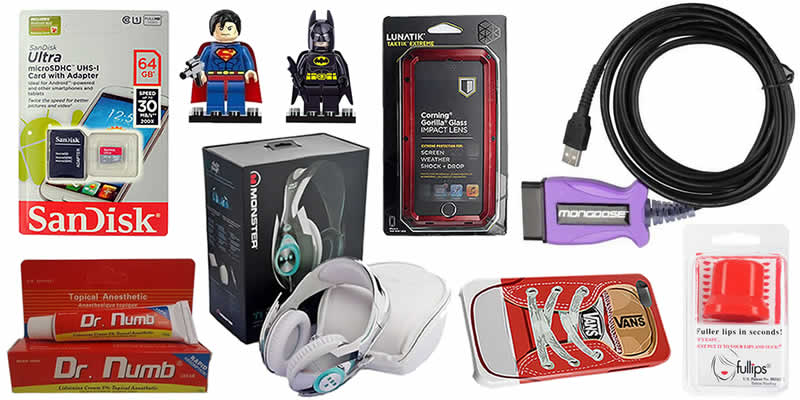Crackdown Required For eBay and Amazon Counterfeits
Websites profit while consumers and manufacturers bear harsh consequences.
March 22, 2017, Los Angeles, CA – Consumers have confidence and expect authentic and safe products when they shop at their local grocery, drugstore or retailer. But that confidence is misplaced when they shop online at e-commerce giants eBay and Amazon. The problem is that anybody, anywhere, can sell just about anything on the websites. Both sites allow unvetted worldwide sellers to inundate their websites with counterfeit products.
In just the past year, The Counterfeit Report®, a popular counterfeit awareness and consumer advocate, sent formal infringement notices, authorized by the manufacturer, to Amazon and eBay to remove listings for 1.8 million counterfeit items offered or sold on their websites. The products were destined for, or purchased by unsuspecting consumers. eBay listings, which reflect actual sales figures, indicate consumers purchased over 650,000 counterfeit or fake items from just the small product sampling selected by The Counterfeit Report. Amazon listings do not reflect sales.
eBay currently faces a federal lawsuit after cell phone case manufacturer Lunatik® notified eBay over 5,000 times of infringing products offered on eBay in colors, models and materials not offered by Lunatik. Inexplicably, the items remain on eBay. The counterfeit problem extends globally. A French court in 2008 ordered eBay to pay LVMH $60 million for allowing trade in counterfeit goods. An appeal court reduced the sum, but affirmed that eBay had been in the wrong.
Apple reported that 90% of Apple products it purchased directly from Amazon were counterfeit. The Recording Industry Association of America (RIAA) placed orders with Amazon and found that 44 of the 194 top CD's delivered were counterfeit, while Birkenstock pulled the plug on Amazon sales of its popular sandals citing counterfeit enforcement problems. A Tennessee family is suing Amazon for $30 million after a counterfeit hoverboard caught fire and completely destroyed their $1 million Nashville home and personal p[ropert in 2016, injuring two of the family’s four children.
Alarmingly, both e-commerce giants don't notify consumers they received a counterfeit, they may be in danger, and are entitled to a refund -- even when the websites have been notified by the manufacturer and know the items are counterfeit, or fake (items that don't even exist in the manufacturer's product line but still bear the registered trademark).
Savvy consumers may be aware of fake watches, purses and shoes, but are easily deceived by a vast array of counterfeit electronics, sporting goods, toys, software, cosmetics, auto parts and OTC drugs.
Could you identify the counterfeit items below purchased on eBay or Amazon?

(Clockwise from left – Photo: The Counterfeit Report®)
Counterfeiting is an illegal $1.7 trillion global criminal enterprise that is profitable, difficult to track and widely unpunished. Consumer awareness is only part of the global solution. Deceptive counterfeits are very common on e-commerce websites and consumers often unknowingly purchase hazardous or potentially deadly items.
Companies that facilitate criminal activity and profit from the dishonest sales which impact consumer safety, jobs and public trust create a public perception of deception and impunity. However, their reputation damage is only a small part of the problem: counterfeiting also costs U.S. manufacturers over $250 billion, U.S. workers over 750,000 jobs, and the manufacturer's brand integrity is tarnished or destroyed.
 |